Types of Podcasts
Overview
Time: 20 minObjectives
Understand various types of podcasts
Learn about advantages and disadvantages of each type of podcast
Interview Podcasts
An interview podcast usually involves one or two hosts who speak with one or more guests each episode. In this format, the guest provides unique expertise or insights on a given topic, industry or theme. You can actually break this format further into two podcast styles:
Expert interviews: In podcasts like Reid Hoffman’s Masters of Scale, the interviewer focuses on a specific topic in which the interviewee is considered a thought leader. For example, a guest like Bill Gates might share stories about his experiences as a technology entrepreneur. Many audience members listen to this type of podcast to learn more about a given industry or gain insights that will help them in their own careers. Entertainment interviews: Entertainment-style podcasts invite guests to share interesting stories about their lives. These shows are often hosted by comedians or entertainment journalists. For example, showrunner Noelle Stevenson recently appeared as a guest on comedian Carmen Esposito’s podcast Query to discuss her experiences in the entertainment industry. Interview-style podcasts can require quite a bit of research. At the same time, the podcast host needs the right skills to draw out interesting stories from guests. This format is a great way to provide a range of opinions and viewpoints.
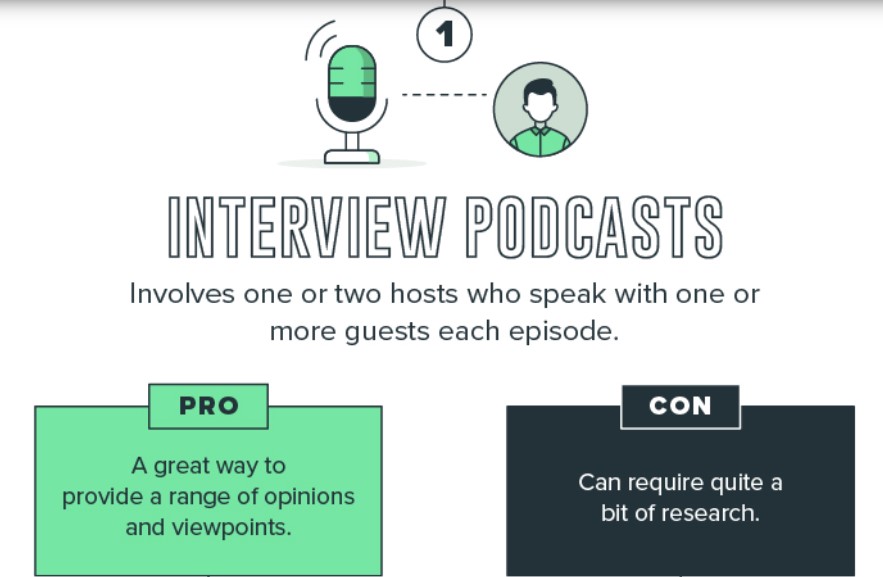
Conversational Podcasts
Conversational, co-hosted podcasts are very similar to traditional radio shows. In this format, two podcast hosts have entertaining conversations about specific themes and topics. Often, co-hosts will discuss trending news stories and provide insightful — or humorous — commentary.
Conversational podcasts may include guests, as well. For example, Brafton’s Above the Fold podcast, co-hosted by Francis Ma and Jeff Baker, often features guests from around the world of content marketing.
This type of podcast requires a high level of comfort and familiarity between the hosts. If the hosts don’t know each other well or don’t get along, the audience will be able to tell. Because you can’t script a conversation — or at least, you shouldn’t — this format is best for hosts who can improvise on the spot.
The conversational podcast may present unique technical challenges. For example, if the hosts reside in separate cities, they’ll need special software to record the voice tracks independently and then splice them together.
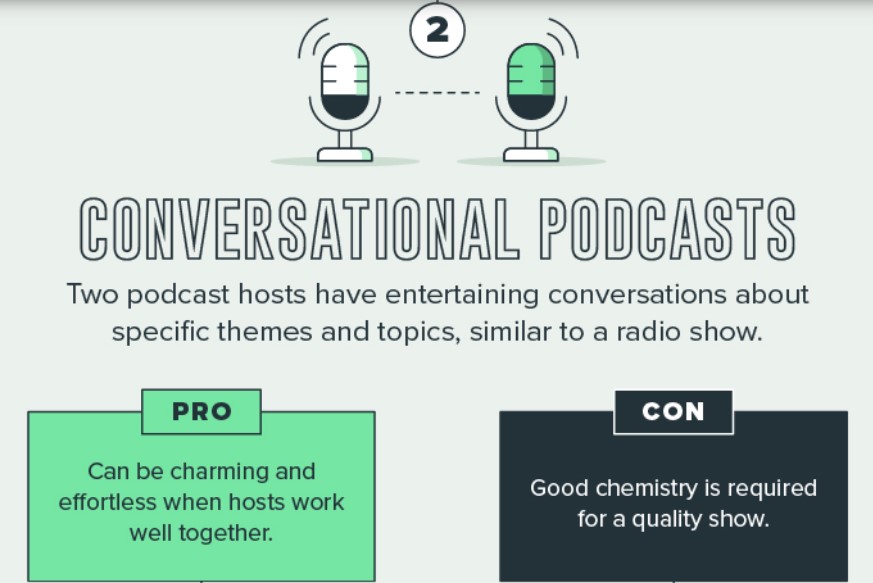
Monologue Podcasts
In the monologue style of podcast, a single host speaks for the entirety of each episode. These podcasts are usually hosted by someone who is an expert in a given field. Audience members tune in to learn about a specific topic or get an informed opinion on recent events.
For example, in the Philosophize This! podcast, host Stephen West takes listeners on a journey through the history of world philosophy. Beginning with presocratic philosophy, West provides an overview of major movements in philosophic thought throughout the ages.
This style of podcast can be applied to any topic — but hosts should have enough experience and expertise to fill many episodes. That said, it’s possible to produce a limited-run podcast that covers a single topic or issue, similar to a serialized audiobook.
The monologue format provides the advantage of not being dependent on other people. The host doesn’t need to book guests or configure schedules with another host. However, this style still requires a fair amount of research.
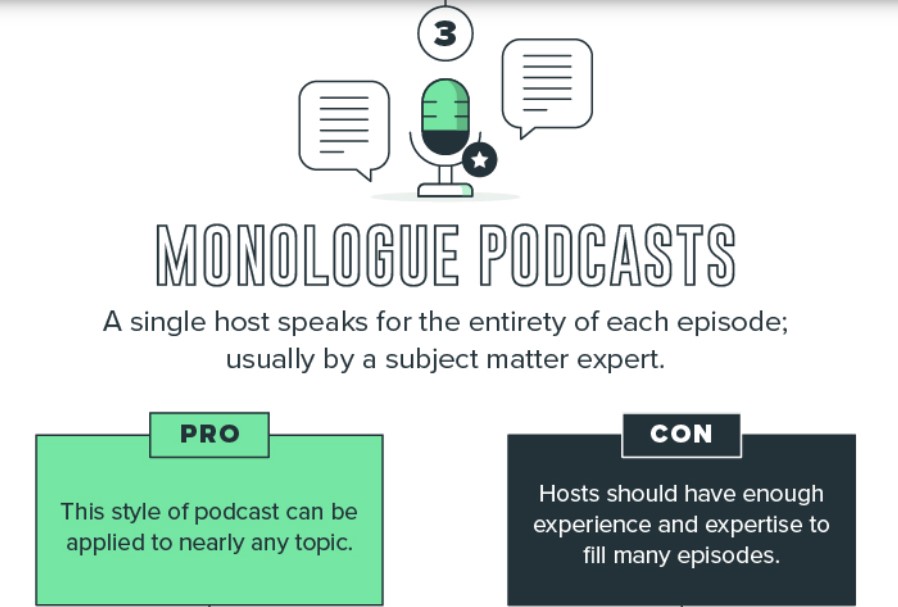
Storytelling / Investigative Podcasts
Podcast listeners enjoy storytelling and investigative podcasts for their immersive experiences. In this format, one or more hosts use each podcast episode to tell an entire story or a chapter of an ongoing story.
There are many different examples of non-fiction story-based podcasts. On one end of the spectrum is Dan Carlin’s Hardcore History podcast. Carlin produces extremely well-researched miniseries that take his podcast listeners through momentous periods of world history. In fact, his show involves so much research that each miniseries takes months to produce.
On the other end of the spectrum is My Favorite Murder, hosted by Karen Kilgariff and Georgia Hardstark. Each episode covers a specific case in gruesome detail. This show is also heavily researched, but provides more personal commentary on each subject.
Non-fiction podcasts can require a lot of resources. Podcasters who excel at this format combine excellent research skills with a keen eye for entertainment value.
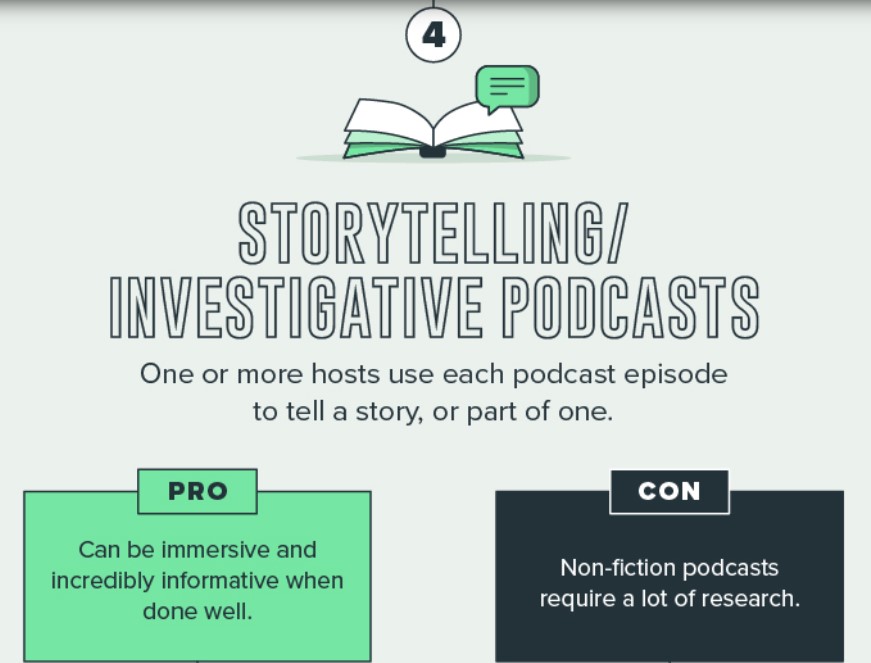
Roundtable Podcasts
Roundtable podcasts, or panel shows, involve a consistent or rotating group of hosts who provide commentary and conversation around specific topics. Often, there is a main host who MCs each episode while co-hosts fill specific roles. For example, some co-hosts may provide more comedic commentary, while others offer in-depth expertise.
Roundtable podcasts take the stress of one person by splitting the workload among a number of different people. For example, on the Joe Budden Podcast, the former rapper is joined by co-hosts and guests who discuss hip-hop, sports and news items.
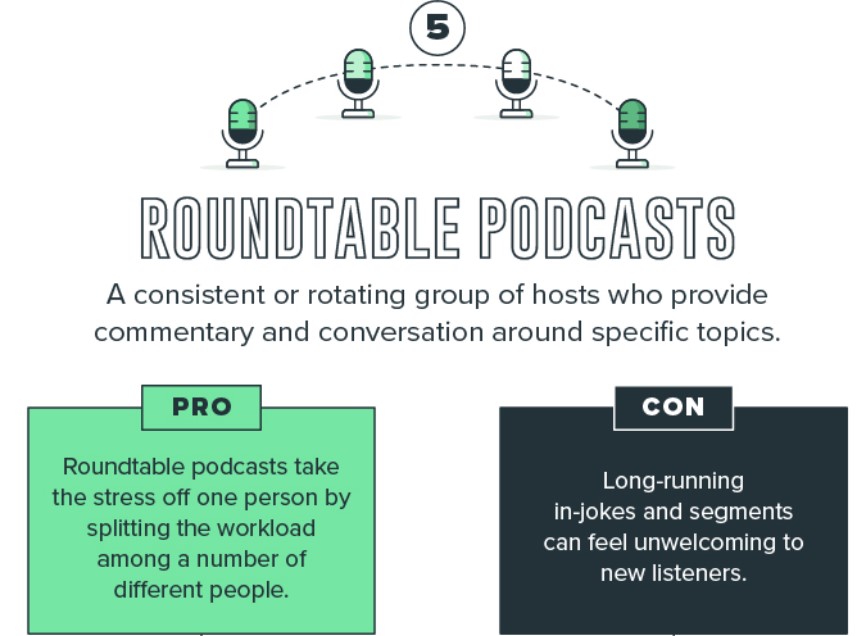
Theatrical Podcasts
Fiction podcasts have been a growing trend for years. Some theatrical podcasts consist of a single host who narrates a story in a similar manner as an audiobook. Other podcasts within this format utilize an entire cast of performers and sound engineers to create more immersive experiences.
In this format, podcast hosts strive to create fictional worlds that entertain their listeners. It demands a level of creativity and experience to keep listeners engaged. While this format doesn’t require as much research as others on this list, it still involves a lot of work. At the same time, that means that the competition is high. Not only do these podcasts compete with each other, but also with other forms of entertainment like TV shows, audiobooks and movies.
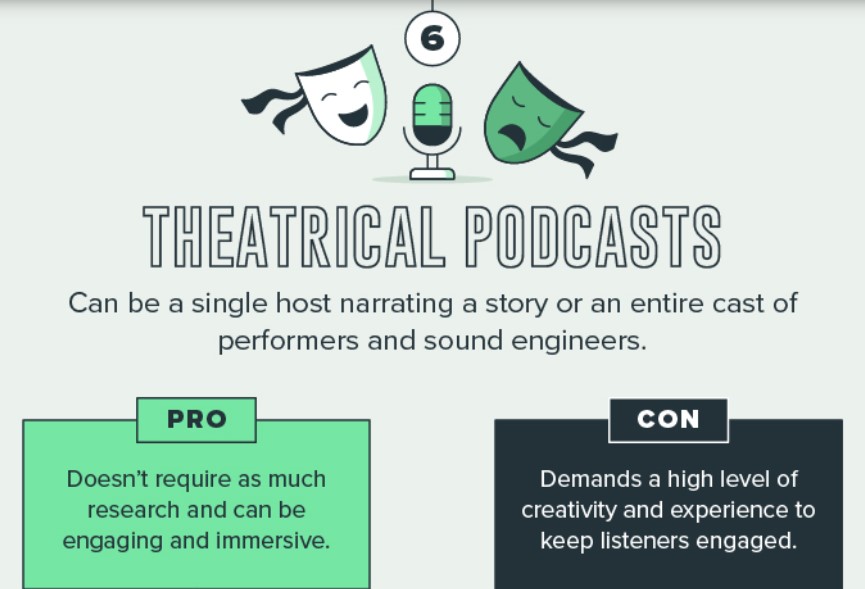
Repurposed Content Podcasts
The process of repurposing existing content provides several benefits, from boosting audience engagement to serving different needs along the sales funnel. Plus, repurposing content can give you the breathing room you need to create fresh, interesting content.
News programs are among the most common in this category. The same story can appear in print, video and audio. This format works well for brands that already produce a lot of content for the web. For example, if your business has a robust backlog of blog content, you could turn each post into its own podcast episode. That would effectively give you double the volume of content and allow you to reach a segment of your target audience that prefers audio content to a written format.
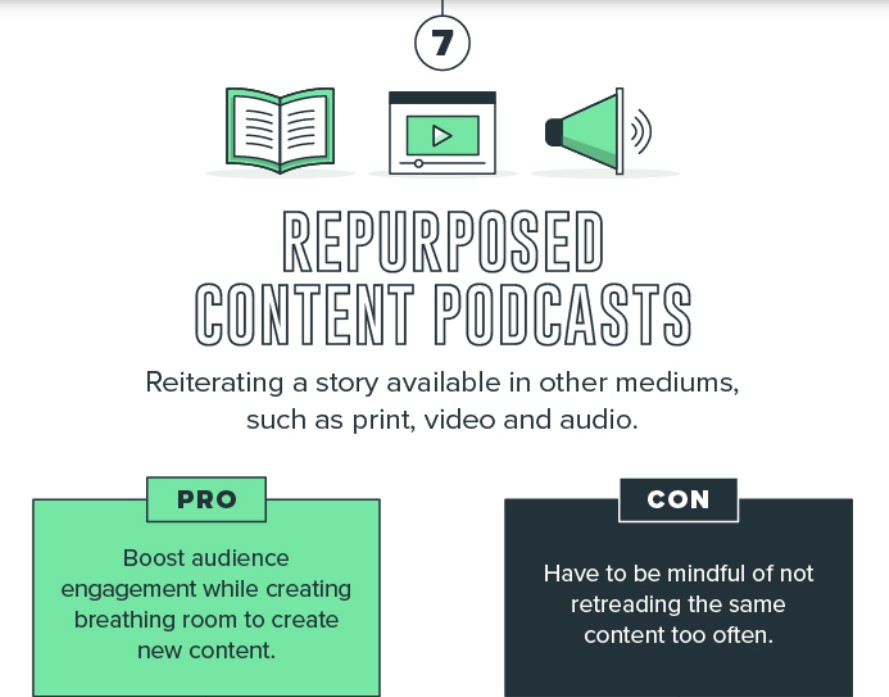
Hybrid Podcasts
Podcasts are a highly flexible medium. You can mix and match the basic formats from this list to create your style. For example, a podcaster with expertise in a given subject area might host a monologue-style podcast and occasionally interview guests. Likewise, a panel show might split each episode into segments, including a space for the main host to present a monologue.
Or, you might come up with a podcast format that’s nothing like anything else on this list! That’s one of the great things about the medium. The barrier to entry is quite low compared to starting a radio show or TV program. There are even free hosting options that allow you to record episodes and post them to major distribution channels, all directly from your smartphone.
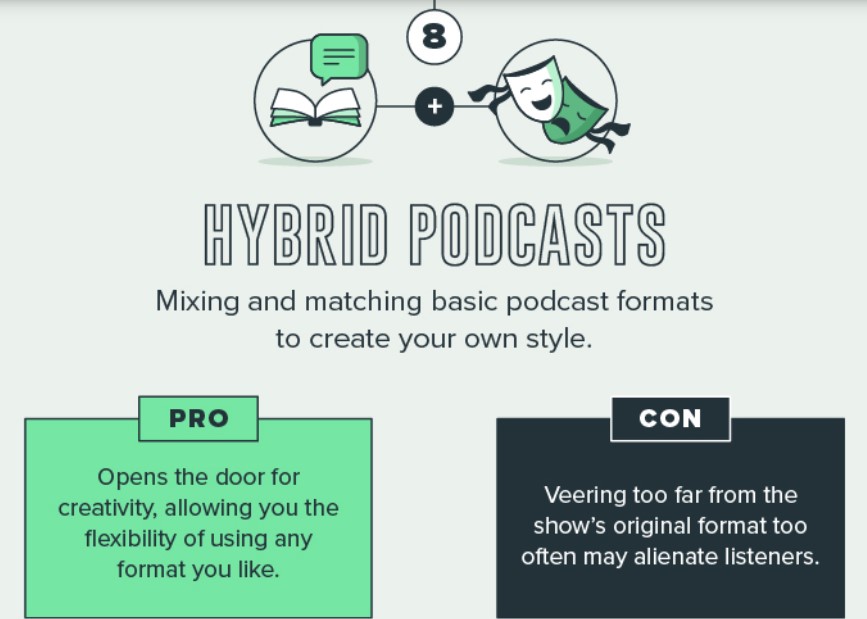
Key Points
Understood all types of podcast along with their pros and cons